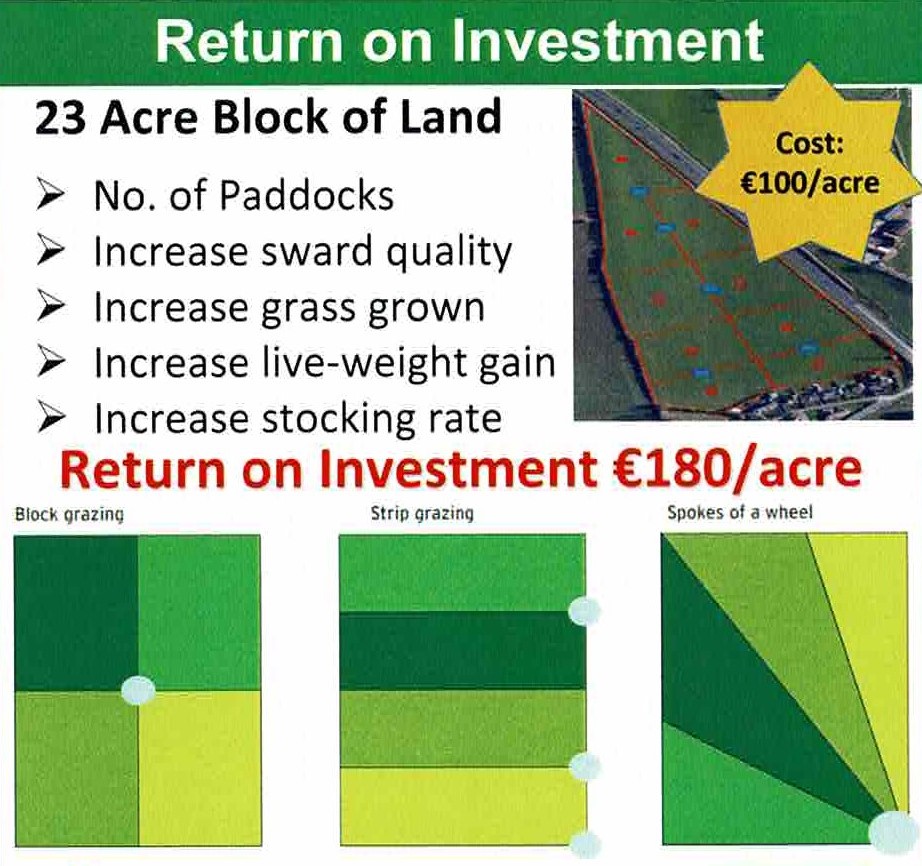Paddock systems do not have to be expensive; the cheapest system will work the finest. This was a key message from a recent Irish Grassland Association (IGA) grazing infrastructure event.
Irish suckler farmers are behind the curve when it comes to grassland management and it is extremely difficult to maximise grass utilisation without implementing a paddock system; it is just as important on drystock farms as it is on dairy enterprises.
Speaking at the event, Teagasc’s Catherine Egan outlined that implementing a paddock system doesn’t happen over night and that many farmers work on a trial and error basis.
She said: “It’s important to keep the whole thing simple. It won’t happen over night and it takes time. You’re not going to split the whole farm up in the first year and not the second year either. It doesn’t have to cost the world to put in a paddock system.
“A lot of farmers are installing temporary fences and using them as permanent boundaries. It makes life a lot handier. If farmers decide to take out surplus bales, the temporary fences can be removed,” she added.
The cost and return
As an example, Catherine explained how the host farmer – Billy Gilmore – divided a 23ac block into nine 2.47ac paddocks. These were then split with temporary fences. The overall cost was €100/ac. This includes: permanent posts; wire; water troughs; and water piping.
These paddocks were then subdivided with temporary wires and, at the same time, the stocking rate was increased from 30 heifers to 50 heifers on the same grazing block.
“By doing so, daily liveweight gain increased by 0.2kg on the same grazing block and – as a result – there was a return on investment of €180/ac. Straight away it had paid for itself,” Catherine explained.
Catherine also outlined the cost of individual temporary fences. On this, she said: “Pig tail fencing costs €0.40c/m, while timber posts and one string of wire cost €1/m.”
A geared reel – which Billy outlined as his number one choice – costs approximately €50-60/unit.
The positioning of water troughs is also critical. If troughs are located at one end of a paddock, stock will have to travel back across grazed pasture to access water. If troughs are strategically positioned, farmers can sub-divide paddocks easier.
Terra Services’ Tom Hennessy outlined that a 75 gallon water trough costs €125, while the pipe can be supplied and buried for €2/m.
“Even to get started, farmers that have water troughs located at the entrances to fields can run wires like spokes of a wheel in four different directions from the drinker as a starting point,” Catherine concluded.


